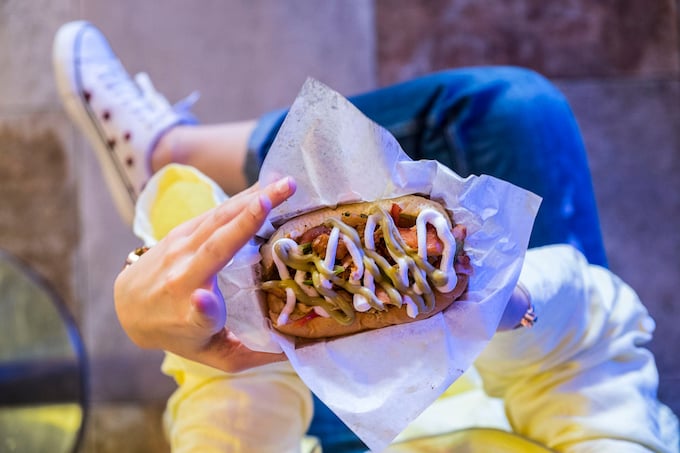Chipotle, Mcdonald’s, Papa John's, Burger King, and Subway were just some of the fast-food chains that ramped up their hiring , making those in the restaurant industry take pause. Tens of thousands of fast food jobs? Weren't we stuck neck-deep in a pandemic? Despite an economy-threatening pandemic, what do all the fast food openings we saw a few years ago teach us about fast food hiring trends and takeaways?
A few positive factors resulted in the fast food hiring boom. Consumers were still venturing out as many cities avoided going back to imposing full lockdowns. And with many people, unfortunately, losing their jobs (if only temporarily), a lower-cost option was increasingly appealing to a large portion of the population. "Getting delivery" denotes fast food in many people's minds; if they're going to get a meal delivered, it's often what they've already been used to ordering. Additionally, with delivery fees adding up (so much so that cities have had to cap them ), many people go for the cheaper option. And of course, there's the measure of safety. Less time spent inside an establishment felt safer to consumers, and grabbing a meal from Subway or Chipotle (both among the best fast food places to work) is quick.
What can other chain restaurants learn about fast food hiring from those that experienced increased sales during 2020? Highlighting affordability and the speed of pick-up orders can be selling points for people today. And once a new customer has tried a delivery or pick-up order, incentivizing them to do it again with a coupon can solidify your restaurant as a convenient option for many future orders.
And hiring 20,000 employees to fill all those fast food openings? No better time to try an automated hiring solution.
The great outdoors?
The surge in restaurants applying for outdoor expansion permits was a very popular trend in many American cities. Of course, that trend was easier said than done for existing restaurants. Very few locations prioritize outdoor seating; many have just a few tables available on their patio. So eateries were forced to get creative in this fast-paced environment.
Many locations converted their parking lots to expanded outdoor seating ( here's a good article on how to make outdoor seating better ). Some rearranged their patios to fit in a few more tables. Others expanded into adjacent, unused spaces, even though leasing another lot might be considered risky. In these various ways, outdoor dining was a lifeline for many fast food restaurants , and coupled with a robust take-out business and strategic fast food hiring, many actually thrived.
Could we be in for a redesign of restaurants? More focus will continue to be put on outdoor seating at the very least, but the industry is endlessly creative. Especially since outdoor seating won't be feasible when the weather gets cold for many cities, we expect to see creative construction (and a slew of heaters! Get them now while it's hot, literally!) to maintain outdoor seating through at least the fall.
Stay open: No sick employees
Easier said than done, right? But many restaurants were forced to close as soon as they reopened due to positive cases among their staff . With officials issuing fines and shutting down locations that were not in compliance, it was important to avoid this in work environment at all costs. And avoiding it came down to instilling a sense of personal responsibility among your employees.
Unfortunately, COVID-19 wasn't just an on-the-job hazard. More likely, employees were exposed during their off-time. While managers are unable to dictate how employees behave off-shift, it proved helpful to distribute information on how to be safe in their everyday lives. Most important of all was for each employee to quickly recognize any sign of being sick with the virus and not come into work.
The best leaders can instill a sense of family in their restaurant staff, and if the sentiment of "protecting each other" can be propagated earnestly, employees will usually try their best to keep both their peers and their workplace safe and in business.
Just tell them Morgan Freeman needs their help.
Remote, Control
Fat food hiring and onboarding is a fascinating process to engage in remotely. Doing everything remotely can be tough, especially for business managers and owners who have always done things a certain way, meaning in-person. It's hard work to teach an old boss new tricks, but now's the time to do it.
With less face-to-face interactions with employees, managers are having trust issues, not just in whether their workers are actually "working" from home with or without flexible schedule; but also trusting in their ability to manage from afar full time. According to Harvard Business High School, 40% of the managers surveyed expressed " low self-confidence in their ability to manage workers remotely ."
So what can be done at each step of the way to alleviate this worry?
Remote hiring for self-motivated employees
More than ever before, now is an important time to hire self-motivated employees. Workers have to self-manage more often, even when working in the same store. Also, there is a level of personal responsibility to keep safe (even during off hours) and be adaptable on the job.
Here is where intelligent screening of applicants is key. Have their previous jobs or positions been in situations where supervision by the general manager was low? If they still excelled, then that's an indication of self-motivation. Can they give an example of accomplishments that resulted from self-motivation? Do they want to climb the ladder and learn more skills?
When fast food hiring, ask applicants to upload a 30-second video of themselves answering a question you pose to quickly weed out unmotivated candidates in two ways: if they give bad answers and if they're really unmotivated, they won't even bother to upload a video at all.
Remote onboarding for self-motivated employees
Once your new hire starts working, training is crucial to set them up for remote-working success. The key is to provide them with clear performance objectives that show a successful end result instead of giving them step-by-step instructions on how to do XYZ. The goal is important for remote management, not so much the path. Different employees will work differently. But if the performance objective is clear, self-motivated ones will get there by asking the right questions and trying things out. As you onboard them with training videos, make sure to stress that it's about the objectives more than anything else.
Establishing this concept at the start of the working relationship is important for both the worker and the manager. The worker should quickly realize that it's up to them to do their job; that the manager will be there for guidance when asked, but won't hand-hold. Either they will thrive in this relationship or quickly wash out. The manager also benefits as trust is conveyed from the start of the relationship.
Remote working for self-motivated employees
According to the HBR article, "...[remote crew members] reporting high levels of monitoring, 49% were often or always anxious when carrying out their job." Oof. Remote managers are often checking in too often and micro-managing their remote workers.
The goal is to have hired and onboarded self-motivated employees so the management level can be kept low. As we all know, fast food hiring is about hiring the right people for the right job, and now the jobs call for remote work and self-motivation.
Need help hiring the right people? Workstream can help. Our platform gets you 4x the number of qualified applicants and reduces your time-to-hire by 70%.
FAQs
What is the highest paying fast-food job?
The highest paying fast-food job often varies depending on factors such as location, experience, and specific roles within the industry. However, managerial positions such as store manager, restaurant general manager, shift manager, or district manager tend to offer higher salaries compared to entry-level positions like cashier, sales associate, or food preparation worker. These managerial roles involve responsibilities such as overseeing customer orders operation, managing staff, and ensuring customer satisfaction, which typically command higher pay.
What is the youngest age to work at fast-food?
The youngest age to work at a fast-food restaurant is usually determined by local labor laws and regulations. In many places, teenagers as young as 14 or 15 years old may be eligible to work part-time with restrictions on the number of hours they can work and the types of tasks they can perform. However, it's essential to check the specific laws in your area regarding minimum age requirements for employment.
Where is the best place to work fast-food?
The best place to work in fast-food can vary based on individual preferences and priorities. Factors to consider may include company culture, opportunities for advancement, employee benefits, and work-life balance. Some food industry chains are known for their employee-friendly policies, training programs, and career development opportunities, while others may offer higher wages or better benefits packages. Ultimately, the best place to work fast-food is subjective and may differ from person to person.
Is fast-food a good first job?
Fast-food can indeed be a good first job for many individuals, especially teenagers and young adults. It provides valuable experience in areas such as customer service, teamwork, time management, and problem-solving, which are transferable skills applicable to various industries. Additionally, working in fast food like KFC, McDonald’s, Wendy’s, or Subway, can help individuals develop a strong work ethic, learn how to handle stressful situations, and build confidence in a professional setting. While it may not be a long-term career path for everyone, a fast-food job can serve as a stepping stone to other opportunities and help individuals gain valuable skills and experience early in their careers.
What kind of jobs are at a fast food restaurant?
There are various jobs available at a fast-food restaurant, including but not limited to cashier, cook, food preparation worker, server, shift supervisor, and manager. Cashiers handle transactions, fill cash register, take orders, and assist customers with menu items and food orders on both drive-thru and in-house. Cooks and food preparation workers are responsible for preparing and cooking food items according to recipes and safety standards to maintain food safety. Servers may deliver food to customers' tables and ensure they have everything they need during their restaurant experience with quick service. Shift supervisors oversee daily operations, manage staff, and ensure that quality and service standards are met. Managers including assistant manager are responsible for overall restaurant performance, including financial management, staff hiring and training, and customer satisfaction with overall food service.







